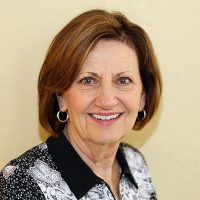"Indirect Evidence Overturns a Direct Evidence Conclusion: From Hypothesis to Published Article"
Presented by Julie Potter Miller, CG®, CGL℠,FNGS
Reviewed by Mary O'Brien Vidlak, CG®
NOTE: This post is one of a series reviewing the BCG Skillbuilding lectures presented at the National Genealogical Society's 2019 Family History Conference held in St. Charles, Missouri from 08-11 May, 2019. Recordings of these lectures and the accompanying session handout can be purchased from PlaybackNow NGS at https://www.playbackngs.com/

Julie Miller, CG®, CGL℠, FNGS: Julie Miller began her lecture “Indirect Evidence Overturns a Direct Evidence Conclusion: From Hypothesis to Published Article” by reminding us that writing our research findings is an integral part of the research process. Using her own work as an example, she walked us through the entire process from developing a hypothesis in answer to a research question to publishing the results.
The research question in her example sought to find the wives of Philip Hart of Goffstown, New Hampshire. Two sources answered the research question with direct evidence. They disagreed, however, on how many times he had been married and whether he had one or two wives with the surname Warren. A hypothesis was created based on the information in the two sources. Ms. Miller then showed how analysis and correlation of the information found through reasonably exhaustive research supported the hypothesis. Her process of using indirect evidence found in a wide variety of sources to overturn a direct evidence conclusion is valuable for all genealogists.
Ms. Miller’s statement that most of us have no shortage of problems to solve drew an audible response. She followed this by suggesting we may already have material in reports or projects where we have solved problems.
In the next section of her lecture, she shared specifics on how to turn such material into an article for publication. She explained the four parts to an article: title, introduction, body, and conclusion and how an article differs from a report. Her detailed information included not only what to do, but also what not to do. She repeatedly reminded us of the need to “revise, proofread, and edit” over and over again. For those who struggle with self-editing, she recommended the book Edit Yourself.[1]
The presentation and syllabus included a list of genealogy publications to consider when submitting articles. To this list was added The Genealogist, published by the American Society of Genealogists. In conclusion, she reminded us that written arguments preserve our research. Written articles published in journals are indexed in PERSI and therefore expose that research to a huge audience.
[1]Bruce Ross-Larson, Edit Yourself, A Manual For Everyone Who Works With Words (New York: W.W. Norton & Company, 1996).
The words Certified Genealogist and letters CG are registered certification marks, and the designations CGL and Certified Genealogical Lecturer are service marks of the Board for Certification of Genealogists®, used under license by board certificants after periodic evaluation.